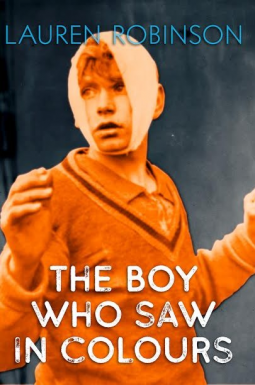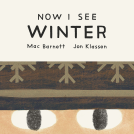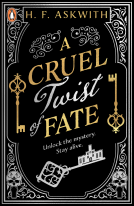
The Boy Who Saw In Colours
by Lauren Robinson
This title was previously available on NetGalley and is now archived.
Send NetGalley books directly to your Kindle or Kindle app
1
To read on a Kindle or Kindle app, please add kindle@netgalley.com as an approved email address to receive files in your Amazon account. Click here for step-by-step instructions.
2
Also find your Kindle email address within your Amazon account, and enter it here.
Pub Date 6 Jun 2020 | Archive Date 28 Jun 2020
Talking about this book? Use #TheBoyWhoSawInColours #NetGalley. More hashtag tips!
Description
What if colours could speak?
The Boy Who Saw In Colours: A raw novel, set amid Nazi uprising, chronicles the life of a boy who dared to dream...
As his family collapses and he and his brother are sent to one of Hitler's elite schools, Josef learns to express his grief and feelings of growing up in the only way he knows how - painting.
Advance Praise
The author uses visuals that should not work, but do so perfectly. I don't usually enjoy the first-person narratives, but for this novel, with the addition of synesthesia, it was a must, and I thought it was stunning.
Available Editions
| ISBN | 9781838533540 |
| PRICE | £4.00 (GBP) |
Average rating from 18 members
Featured Reviews
 Reviewer 685067
Reviewer 685067
I came across this book by accident and it was a lucky one. The writing in the book is lyrical and wrought with personification at every opportune moment. Everyday feelings and objects were given human dispositions that made sense and added to the quality of writing. Josef is such a unique character and the choice of narrator was unique and made for creative storytelling.
The decision to include synaesthesia was informative for someone who was unfamiliar with the condition itself. But with the way the narrator explains it to us in a way that doesn’t feel like we are being treated like children and spoon fed. I can't wait to see more from this author.
 Cathy E, Educator
Cathy E, Educator
Thank you to Netgalley for a copy in return for an honest review. This book was a break away from the norm for me, but what a lovely break that was. This is a story of childhood and friendship and was a peek into a world I had never really considered before. We all know that there are two sides to every war and that one person's enemy is another's son, but now that son has a name, Joseph.
I'm not here to tell you what the book is about, you should read it, but I'm here to tell you it is beautifully written and delicately delivered. The characters feel real and they are all likeable in their own way. I enjoyed the writing style although personally I'd like a little more of the direct speech to the reader. I did have to reread a couple bits as it jumped a little in places but that adds to the style of the book. The time in the war was short, and I was unsure why Joseph never knew the man's name but he appeared more than once. I possibly would have liked to know more.
Overall a really thought provoking read and something I would like to know more about. Very unique, well I haven't read anything like this before.
4.5 stars
This was both a book I didn't want to put down, but also a book that I needed to take a break from. There was a lot of tension created by the narrator, which is Josef when he is older. He foreshadows a lot, and then says he doesn't want to spoil it for us. And although he sort of has spoiled it for us, we feel the time coming and we wonder when and how. I've read a number of books about WWII from varying points of view, but this is the first time I've read a book from the point of view of a young child in a Nazi boarding school (and not by his choice). The closest I've come to this is All the Light We Cannot See where you do hear some of the story from the point of view of a boy at a Nazi training school. But the boy was older in that story, and the point of view shifts back and forth between past and present, and between the characters. So this was unique, and on top of that, the boy is not exactly prime Nazi material. His eyes are not blue (although his brother's are), he is an artist, and without revealing spoilers, there are a myriad other reasons why he would be executed on the spot if Hitler knew of him. So it's kind of obvious to other kids that he doesn't quite fit in, so he does end up getting bullied. There are many characters who I ended up loving throughout as the narrator makes it very clear that everyone was really doing the best they could. I especially loved Oskar and Von even when I got mad at them. But even the bullies turn out to be much more complex and interesting and I end up feeling really bad for them by the end. The same goes for the cook, who I initially hated, but I just wanted to hug her at the end. Crazy huh? An interesting addition is that the boy has synesthesia, which basically means (in his case) that he senses the world in colors and smells. He doesn't read well as a result and in fact anything having to do with words (including memorizing) is extra challenging for him. What the author does (I'd like to think intentionally) is convey this story in colors and smells. You can almost see them as he tells his story. But it sort of feels like stream-of-consciousness full of colors and smells. It was definitely a unique way of telling the story and I would be very interested to see what her future books would be like. Because it works extremely well for this book, but I don't think it would work as well for any other type of story. In any case, I had to put this book down after reading a chapter or two because there was so much packed in each chapter. This book surprisingly took me over a week to complete. Normally I can read a book of this length in a day or two. But it was a combination of the tough subject and the way it was written that made me take the story in smaller doses. But it did not take away my enjoyment/attention from the book. I just spread it out over a longer period.
Although the main character of this book starts out very young, I would probably recommend this book to teens and above.
Thanks to #LaurenRobinson, #NetGalley, and #BooksGoSocial for this ARC in exchange for an honest review.
 Marcia B, Reviewer
Marcia B, Reviewer
Many thanks to Net Galley, Books and Go Social for the opportunity to read and review this book.
I was first attracted to this story because of the title. Synaesthesia is a little understood condition where one sense is experienced as another, words can be tasted, or have colours associated with them, sounds evoke a smell etc. As someone who experiences a level of synaesthesia myself, I was intrigued to read a book about a child who saw in colours.
The book is categorised as LGBTIQA/Historical Fiction through Net Galley, but the LGBTIQA aspect plays a minor role compared with the Historical Fiction/Synaesthesia aspect.
The story is set in Nazi Germany during World War 2 and is written from the point of view of a young boy, Josef (pronounced Yosef) Schneider, the boy who sees in colours. Early in the tale, as he lies as an old man on his deathbed, he beautifully sums up the story:
“It’s just a small story, really.
• About two brothers,
• A doomed friendship,
• Some colours, and;
• Quite a lot of swearing.”
Of course, it’s more, so much more than that. It’s the story of two boys, Josef 12 and his younger brother Tomas, 10. It’s about a paintbrush left to Josef by his Oma when she died. It’s about a German woman married to a Jew and their two Mischling children. It’s about the men in uniform and the Masked Monsters. It’s about two young boys, becoming young men, having been torn from their parent’s arms and thrust into a brutal boarding school – “Inland” – located in Munich with the aim of creating the bravest and strongest boys to go on to become soldiers for the Führer. It’s about discovering that not only are you a Mischling, but also a Faggot and it’s about discovering that the vans heading down the road to Dachau are not carrying pigs and sheep as you have been told, but men with yellow stars, or pink triangles. And through it all, it’s about the colours, and quite a lot of swearing!
Like Trent Dalton’s book, “Boy Swallows Universe”, I believe The Boy Who Saw in Colours will be divisive, you will love it, be captured by it and unable to put it down or it won’t resonate at all. There won’t be a middle ground. But don’t assume your reaction to Dalton’s book will predicate your response to Robinson’s book.
I absolutely loved this book, it’s powerful, confronting, distressing, uplifting and deals with a very different aspect of life in Nazi Germany for young men at the elite schools set up to create the ultimate soldier for the Third Reich. Highly recommended.
This book was just beautifully written.
Two brothers sent to Inland when the start of World War II is in sight. The story is so subtle but not incapable of provoking so many emotions throughout. I've really been enjoying some historical fiction this year, but this is definitely one of the best. There's many stories recently about concentration camps in harrowing detail but I never thought about the other side. The children sent to Hitler's elite schools to train. The world is different from josef's perspective as he takes you through his journey in colours. I loved the detail given, the perspective of a child growing up in Hitler youth and the questions that persist when you discover who you are. If you're a fan of historical fiction definitely read this. It's just so wonderfully written my words won't do it justice.
 Kathy F, Reviewer
Kathy F, Reviewer
This exceptional book is different from any other I have read about WWII. The character of Josef, 12, is so unique and memorable as he struggles to understand what is happening to his world as WWII begins and Nazism rises.
He and his younger brother Tomas, 10, are taken from their parents, given new identities, and sent to live at Inland School where they are to be trained to be Hitler's soldiers for the Reich. Josef is a boy who has always seen and heard people, events, and the emotions surrounding them in colors. He longs to paint everything he feels to record what is happening. Of course, this sets him apart from the other children and adults who don't understand Josef or his world of colors. He learns that difference is not prized in his world, yet he is who he is and cannot be otherwise. His is a constant struggle to understand the world around him and a longing to be accepted so that he can be who he is.
"I wondered what the world would be like if every strange little child got to be what was in their hearts."
Written in a style reminiscent of poetic prose, the reader cannot help but begin to see the world as colors too. Reading this book is such a unique and wonderful experience!! I highly recommend it!
My thanks to NetGalley and Books Go Social for allowing me to read a digital ARC of this book in exchange for an unbiased opinion. All opinions expressed here are my own.
 Reviewer 117626
Reviewer 117626
A complex tale of Nazi Germany as seen through the eyes of a young boy. As Hitler's tentacles slowly extend to take freedom after freedom away from the Jews, one day a forceful knock at the door announces the arrival of the SS to the home of Lissette and Ben and their sons, Thomas and Josef. The boys would be taken to Inland, a "school", which will train them to be "fine, young Ayran men". A school where there are man children, but very little childhood. We were Germany's future with no future.
"It's a small story, really. About two brothers. A doomed friendship. Some colours." Josef can hear colours, see scents and taste sounds; he had synthesia, before that word is known. He is an artist -- a painter. He creates ten paintings during the 5 years in Inland, and they tell his story.
I read this EARC courtesy of Books Go Social and Net Galley. pub date 06/06/20









